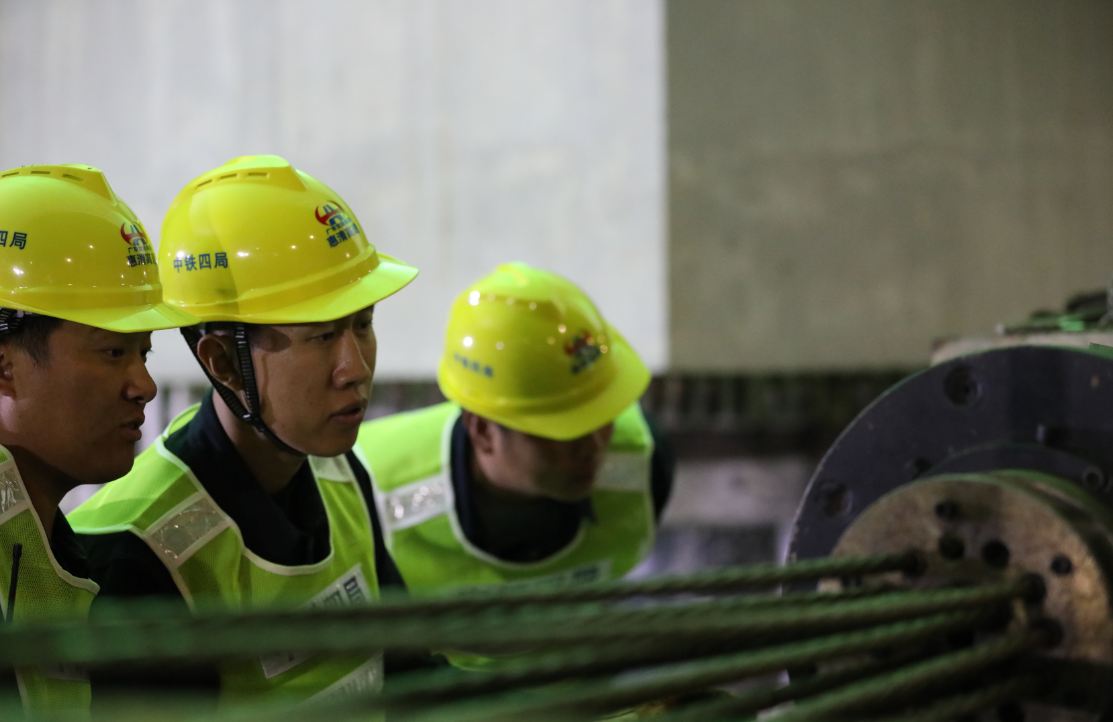Guangdong bridge achieves major feat
 0 Comment(s)
0 Comment(s) Print
Print E-mail China Daily, April 3, 2019
E-mail China Daily, April 3, 2019

A 100-meter-long and 33-meter-wide swivel bridge, the country's largest and heaviest one which spans a major railway and a highway in Guangdong province, turned to its targeted position on Tuesday after rotating for 115 minutes without affecting the traffic.
The swivel bridge, part of the Shantou-Zhanjiang Expressway, rotated perfectly though it towers as high as 25 storeys of a high-rise and is as heavy as 10,000 cars, said Yang Weishuang, an engineering chief from the China Railway No 4 Engineering Group Co Ltd (CREC4), the company building it.
The expressway is considered an achievement in the building of the Guangdong-Hong Kong-Macao Greater Bay Area, that encompasses nine cities in South China's Guangdong province in addition to the two special administrative regions, he said.
The T-shaped swivel bridge, as the No 2 pier complex of the super bridge crossing the Beijiang River, spans the Beijing-Guangzhou Railway and the S253 provincial highway perfectly after rotating for an angle of 87 degrees.
Built over a 22-month period at a cost of 33 million yuan ($4.9 million), the swivel bridge represents Chinese and CREC4 excellence and is a major boost for the full completion of the Huizhou-Qingyuan Section of Shantou-Zhanjiang Expressway in 2020, Yang said.
CREC4 Information Office director Jiang Longyu said, with a history of 69 years, CREC4 has built 14.6 percent of China's existing 130,000 kilometers of railway lines.
Taking advantage of a 110-minute "dormant period" of the Beijing-Guangzhou Railway, an on-site construction commander ordered the bridge to slowly rotate clockwise at a speed of 73 centimeters per minute starting 1:30 a.m.
While the swivel beam is installed with speed sensors and cameras to monitor and adjust the swivel speed in real time, on-site staff members also monitored the rotation in real time to ensure the swivel accurately fits its targeted position.
During the construction process, the Beijing-Guangzhou Railway usually has a train every five minutes on average while the S253 highway is also busy with traffic as an important artery. To reduce interference with the traffic, the bridge uses a rotating body, which was built in parallel with the railway and the highway at open spaces between them.
Before the event, the builders built and prepared every item needed, including the box girder of the bridge, the ball joint installation and the traction system, for the rotation.
"The principle of the swivel beam is like pushing a grinding disc. We put a turntable on the bridge pier and use the jack to push the bridge to rotate," said Yan Abei, CREC4's project manager for the 13th Team at the Huizhou-Qingyuan Section of Shantou-Zhanjiang Expressway.
The Huizhou-Qingyuan Section of the Shantou-Zhanjiang Expressway, invested by Guangdong Provincial Transportation Group, runs for 128.3 kilometers with an investment of 20.79 billion yuan and is a key project in the province.
Upon completion, the journey from Huizhou city, which borders the provincial capital of Guangzhou in the east, to Qingyuan city bordering Guangzhou in the northwest, will be shortened from three hours to 90 minutes.
The expressway will help boost the coordinated development of Guangdong's eastern and western regions, while Huizhou, which lies within the Greater Bay Area, will help promote the building of the GBA, said Yang.






Go to Forum >>0 Comment(s)